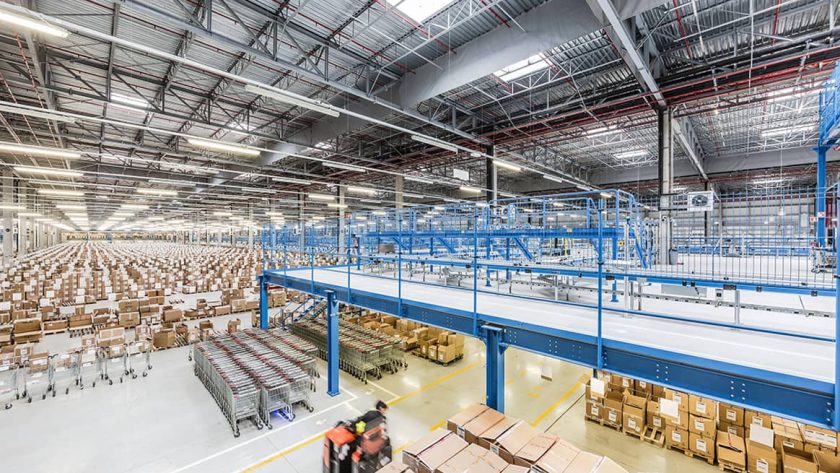The ever-evolving e-commerce revolution is reshaping the fashion retail scene, providing consumers with unprecedented convenience. Yet, for companies manoeuvring through this dynamic environment, a host of logistical challenges accompanies this transformation, rendering the intricacies of effective logistics management increasingly vital for them to succeed.
In 2023 logistics is greatly influenced by geopolitics. Rising transportation costs, coupled with inflation, have prompted companies to adopt new practices. Within this framework, the path is guided by the astute marketing acumen and optimization mindset of the most progressive fashion companies. Among them are those who recognize in logistics and cost optimization not only an avenue for efficiency but also an opportunity to transition towards sustainability and responsible practices.
Increase in product returns and loyalty initiatives
Within the realm of e-shopping experiences, consumers actively seek a smooth and adaptable journey, with flexibility in delivery options, rapid and free shipping, and straightforward return processes. The expeditious and successful delivery of products plays a pivotal role in retaining customers. According to Cubyn, a leading provider of e-fulfillment and e-commerce robotics in France, a substantial 96 percent of consumers consider the quality of the delivery experience as a crucial factor influencing their decisions for future purchases. Consumers are also geared towards innovations that elevate their shopping experience, such as mobile shopping or voice shopping.
However, it is eventually these methods that foster impulse buying, which contribute to the growing trend in returns. In 2022, Statista reported that 20 percent of French consumers returned clothing items ordered online. This poses a significant logistical challenge for major e-commerce players, along with the complexities of inventory management. Especially in the fashion sector, where free product returns are commonly provided. Or at least, used to be vastly offered. Since 2022, ready-to-wear retailers such as Zara, H&M, Boohoo, and Next have started implementing charges for returning items purchased online, signalling a departure from the era of excessive “free returns”. Zara, for example, now deducts 1.95 euros from the refund linked to the return of an item ordered online. Even the 90 billion dollar Chinese giant Shein has introduced return fees, although it still offers free returns for first purchases.
Going further, these marketing savvy businesses have turned the financial and logistical challenge of escalating returns into an exclusive chance to build and nurture customer loyalty. Similar to the Amazon Prime model, fashion companies are providing membership-style return options to their VIP customers and rewarding high-value, loyal shoppers with a more personalised experience. The impact of membership programs has indeed proven to not only increase consumer loyalty but also uplift their average expenditure. A 2020 study by McKinsey and Co revealed that shoppers enrolled in free loyalty programs spent 30 percent more than non-members, and that this figure increased to 60 percent for those who paid for a membership. Perhaps indicating the success of the surge in VIP returns programs, the average online shopping basket for French consumers increased by 10.1 percent to 68 euros during the first quarter of 2023, according to Statista.
But what prompted companies in 2023 to reconsider their approach to returns is not solely the inventory, logistics, or financial costs but rather the increased transportation expenses, which pose an additional challenge for e-commerce platforms.
When a surge in transportation costs results in greater road availability
For e-commerce customers, rapid and precise delivery is no longer just a competitive edge but a fundamental requirement. The challenge of ensuring timely deliveries and accurate order fulfilment has become even more pronounced, especially during peak seasons and promotional periods. This challenge is compounded by a significant increase in transport costs since 2022, primarily due to rising energy and wage expenses. This upward trend is expected to continue up until the end of 2023, with the National Road Committee projecting an 8.8 percent cost inflation in France, excluding fuel. Fashion companies are now faced with two pivotal strategic choices: optimising their logistics and supply chain management or outsourcing their logistics.
However, another factor is at play this year, counteracting this trend: the decreasing cost of European roads. In fact, European roads’ availability has notably expanded in 2023, leading to heightened competition among road freight operators and a consequent substantial drop in spot rates. According to Transporeon, the capacity index skyrocketed by 22.7 percent in March 2023 compared to March 2022. This trend can be attributed to smaller road freight operators being acquired by larger companies due to the financial burden of increasing operational costs, as suggested by Transport Intelligence. Consolidation is, regrettably, becoming increasingly common, with notable recent cases including Rhenus Logistics’ acquisition of Croatian Trans Integral and Dutch Nederlandse Transport Maatschappij, as well as Geodis’ takeover of French Transports Devoluy. By utilising artificial intelligence (AI), businesses can take advantage of the increased accessibility of European roads to improve cost-effectiveness and excel in the ever-changing delivery landscape by optimising their route efficiency.
Harnessing AI for logistics optimization opportunities
With its ability to carry out predictive analysis, AI can assist fashion companies in predicting client demand, optimising inventories, and efficiently planning routes. The software company Oracle envisions a significant shift in the fashion industry with the integration of AI. While streamlining costs involves intelligently selecting carriers, AI’s machine learning can meticulously assess a supplier’s historical performance, using this data to forecast future reliability. In the current fast-paced business climate, where time management is paramount for both e-commerce and traditional firms, AI can predict the likelihood of a supplier to fail in delivering orders on time.
Factors such as weather forecasts can be incorporated to anticipate potential impacts along the industry value chain. For instance, evaluating the effects of an impending drought on cotton production or heavy rain on roads’ traffic. Such data improves route optimization for logistics by identifying the shortest distance between two points while avoiding traffic disruptions. Integrating AI technology into the supply chain also enables route optimization by providing drivers with informed decisions. It helps them, for instance, to discover the most efficient refuelling and lunch break locations, leading to reduced stop durations and numbers in a single working day. This results in minimised fuel costs and increased transportation efficiency and sustainability.
Exploring sustainable transport partnerships in the pursuit of efficiency
In fact, what could be a better strategy for fashion companies in 2023 than to explore sustainable partnerships while striving for logistics efficiency? Collaborative platforms and partnerships are now thriving in the industry, with joint efforts between logistics service providers and e-commerce companies yielding solutions for shared warehousing, optimised transportation, and multi-modal delivery systems. These initiatives not only cut costs but also streamline operations. Puma, H&M, and Maersk, for instance, are collaborating to adopt more sustainable supply chain practices, encompassing solutions for supply chain visibility, lower-impact transportation, and the establishment of green corridors.
During a talk on net-zero at the 2023 Global fashion Summit, Henriette Hallberg Thygesen, Maersk’s chief delivery officer, highlighted that the average shipping container is only 70 percent full. This, as denounced by French truck delivery drivers, is a consequence of the surge in promises by companies to deliver within 24 hours, regardless of the customer’s location. H&M is thus taking action by partnering with peers shipping from the same locations to utilise fewer vessels, while Puma has increased its container fill rates by 10 percent in the past year through collaboration with its sales team and analysing dashboards to understand product demand better. Additionally, by right-sizing the average shoebox to pack more into one container, Puma has shipped fewer containers overall. Notably, H&M achieved a milestone by shipping 100 percent of online packages in the Netherlands with electric vehicles through a collaborative initiative with Volta Trucks and electric motorcycle maker Cake.
Whether by increasing container fill rates, right-sizing packaging, or embracing electric vehicles, these initiatives exemplify a commitment to meeting consumer expectations while also addressing the urgent need for a more environmentally conscious and socially responsible fashion industry. As echoed by industry experts, achieving a sustainable future within the apparel sector demands collaboration across the supply chain and commitment from top-level leadership. This marks a crucial moment, requiring adaptation for survival and growth.



